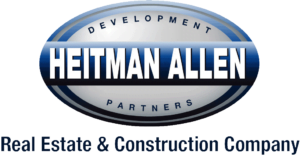The City is currently working with our community to complete two distinct plans related to issues Lake Oswego cares deeply about: housing production and the urban forest. While the plans stand independent of one another, over the past several years we’ve seen neighborhood conflicts arise between the two themes, especially when housing production means removal of trees. These disputes highlight how deeply Lake Oswego residents care for our role in addressing Oregon’s housing shortage and how critical they deem the health of the urban forest. Neighbors also reflect differing viewpoints on affordable housing and how precarious it can be to navigate private property rights when issues as significant as housing and the environment appear to collide.
The high value Lake Oswego places on trees and natural areas isn’t just reflected in words through stringent tree regulations or in policies protecting open space and the enhancement of natural areas. You see if reflected in the actions of our residents fostering a healthy forest and in the immense canopy Lake Oswego enjoys as an urbanized area. Despite population and housing growth over the past decades, Lake Oswego’s tree canopy has continued to flourish and is the second highest in the Metro area only to King City. While there remains room for improvement and adaptation especially as climate change impacts species viability, we enjoy the canopy other cities aspire to achieve.
Avoiding caustic disputes over trees and housing and angst over affordable housing requires more trust and dialogue between community members – neighbors, builders, nonprofits and the City alike.
In our city environment constrained by the urban growth boundary, housing production is complementary to environmental protection, keeping forests and farmland from sprawl-induced destruction even if it means some trees are removed and replanted locally. We understand the often-voiced complaint that removing and replanting trees for large homes seems antithetical to our community values. That statement rings true. As our household size decreases, the size of dwellings is increasing, taking sustainable living and what can be viewed as excessive trees along with it.
At the same time, when the City introduces middle housing (multiple units via plexes and cottage clusters on one lot) as a chance to build smaller, more sustainable housing units or when housing for low and moderate income families is proposed, neighborhood pushback is strong.
Recently two separate cottage clusters were proposed on lots that would each typically contain one large single-family home. Unfortunately, both clusters received vociferous neighborhood opposition. Also antagonistic to housing, neighbors erected signs on the construction fence surrounding Habitat for Humanity’s townhome project on Boones Ferry Road, the City’s first ever affordable for-ownership project, chastising the City Council for “destroying the forest.”
Efforts to slow and stop housing production under the refutation of environmental concerns, neighborhood traffic and the like are misplaced at best and at worst an acidic reminder of the elitist, classist and racist tropes that historically gave Lake Oswego a horrific reputation regionwide.
Likewise, developers need to better read the room and demonstrate the respect for our natural surroundings the community demands. Our residents have made clear they want to see more creative housing designs that incorporate existing trees, especially those of large stature. Developers have been successful in Lake Oswego, and instead of engaging in adversarial neighborhood relations by shoving forward the maximum of what is legally allowed, they should step back and first be thoughtful to the existing environment. Even better, some of our most prolific builders could apply their advanced knowledge of our code to help address the housing shortage and construct designs that meet the needs of more Oswegans.
There are no codes to regulate being good neighbors and community members. Together we must build trust as we coalesce around continuing to enhance the natural environment locally while realizing that creating conditions of possibilities for families to join and in many cases remain a part of our community is all a part of that process.
Original article here.
